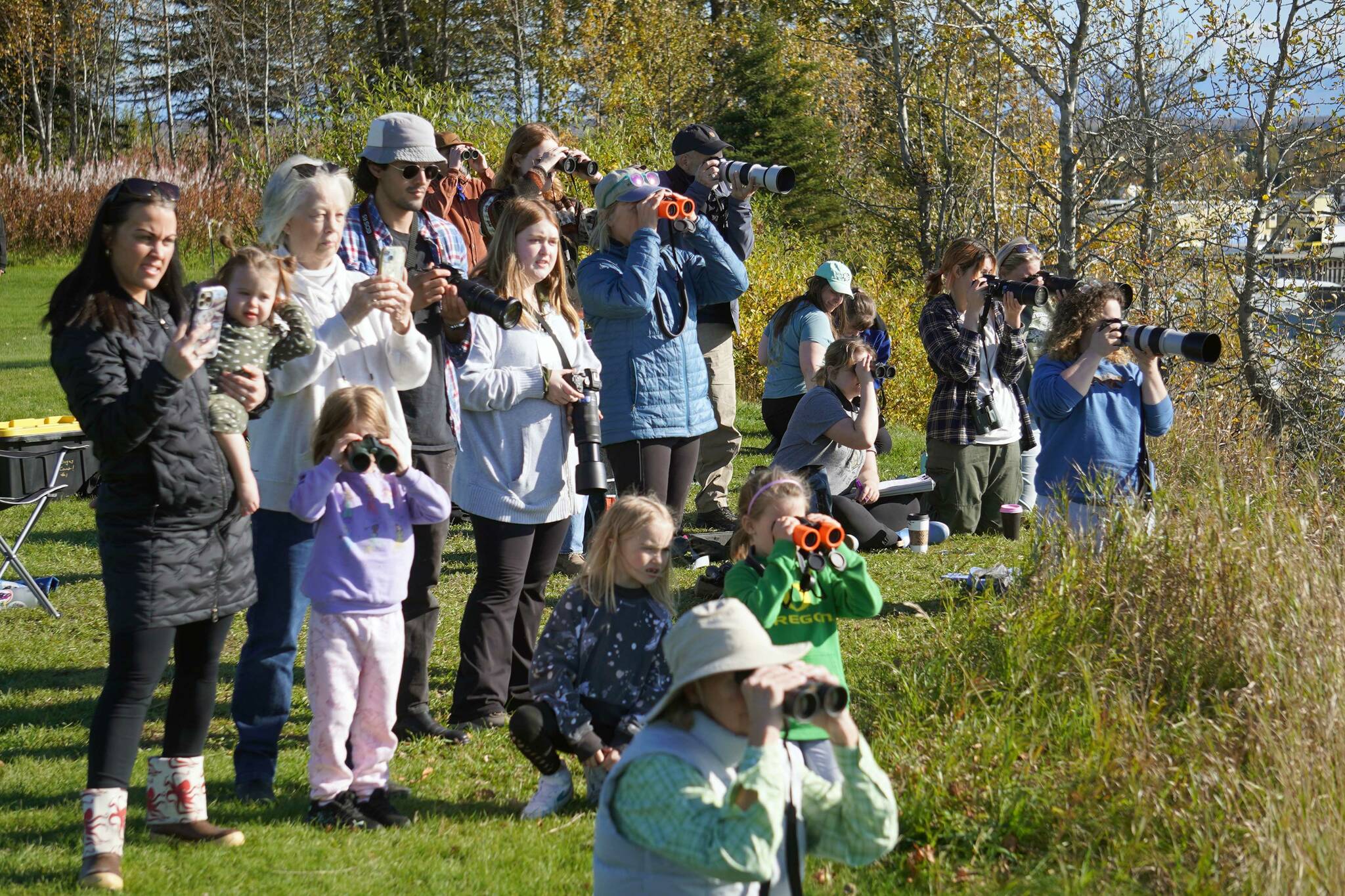Across 22 Cook Inlet viewing stations, 88 beluga whales were seen by more than 1,800 participants in this year’s Belugas Count! event on Saturday.
At one viewing station on Kenai’s bluff overlook by the Kenai Senior Center, dozens of camera and binocular lenses were aimed at the waters of the Kenai River as people viewed a group of four to six belugas that spent over an hour moving back and forth from the mouth of the river to right in front of the station.
Students and staff from the Semester by the Bay program of Kenai Peninsula College’s Kachemak Bay Campus eagerly guided attendees in spotting the belugas as they regularly broke the water’s surface while moving up and downstream. They also shared information about Cook Inlet’s beluga whales, a genetically distinct and endangered population of the species.
According to the National Oceanic and Atmospheric Administration, there are five populations of beluga whales in Alaska. The Cook Inlet population is the smallest, and the only one to be registered as endangered. Cook Inlet belugas were identified as endangered in 2008 and have been designated by the agency as a “Species in the Spotlight” since 2015. Around 300 are estimated to remain in the inlet.
The annual Belugas Count! is a celebration intended to foster pride and stewardship of the endangered population, with stations across Cook Inlet. In Anchorage, the event also includes a festival and educational presentations.
KPC Professor of Biology Dr. Debbie Boege-Tobin said on Saturday that the Kenai station was jointly hosted by KPC and the Alaska Wildlife Alliance. During the event, her students were looking to collect photos to identify each of the belugas seen, while also recording details like other nearby wildlife, human-made sounds like planes or helicopters, and collecting water and genetic samples.
They were also working to educate people about the endangered species in their backyards.
“Most people, I would say … they’re not as aware of all the marine organisms that are out there,” Boege-Tobin said.
The data collected, she said, is part of an ongoing effort to understand the remaining population of Cook Inlet beluga whales and the challenges they face. Belugas rely heavily on echolocation, so may be uniquely susceptible to noise disturbance, but researchers are also looking to understand water quality, abundance of prey and other factors.
There are lots of questions surrounding the species, Boege-Tobin said, like why the beluga whales don’t spend much time in Kenai River during the salmon runs, when their prey is clearly abundant.
“When a lot of us are out there dipnetting and fishing, both commercial and for subsistence, we don’t see the belugas,” she said. “Maybe its because there’s so much human activity, they avoid it. We don’t really know.”
Another question that the group is considering this year is why the belugas are so often seen around and in the Kenai River, but very rarely in Kachemak Bay, part of their “critical habitat.” The students this year will work to create a habitat characteristic comparison to explore what differences, if any, there are between the two areas.
This year they’ll also be able to complete some genomic sequencing of DNA samples taken from the water. Usually, Boege-Tobin said, that process can be prohibitively expensive, but they’ve arranged to piggyback this year’s samples with another project. There’s still an archive of years of samples that she hopes to eventually secure grant funding to sequence.
The students will share some of their findings at a presentation on Dec. 10 at Kachemak Bay Campus.
The monitoring effort stretches beyond Belugas Count! to the broader Alaska Beluga Monitoring Program, which since 2019 has conducted community science assessment of the beluga population at six viewing stations around the inlet. The students completed an AKBMP monitoring session while manning the Belugas Count! station in Kenai on Saturday. For more information, or to enroll as a volunteer monitor, visit akbmp.org.
For more information about Belugas Count!, find “Belugas Count” on Facebook.
Reach reporter Jake Dye at jacob.dye@peninsulaclarion.com.

